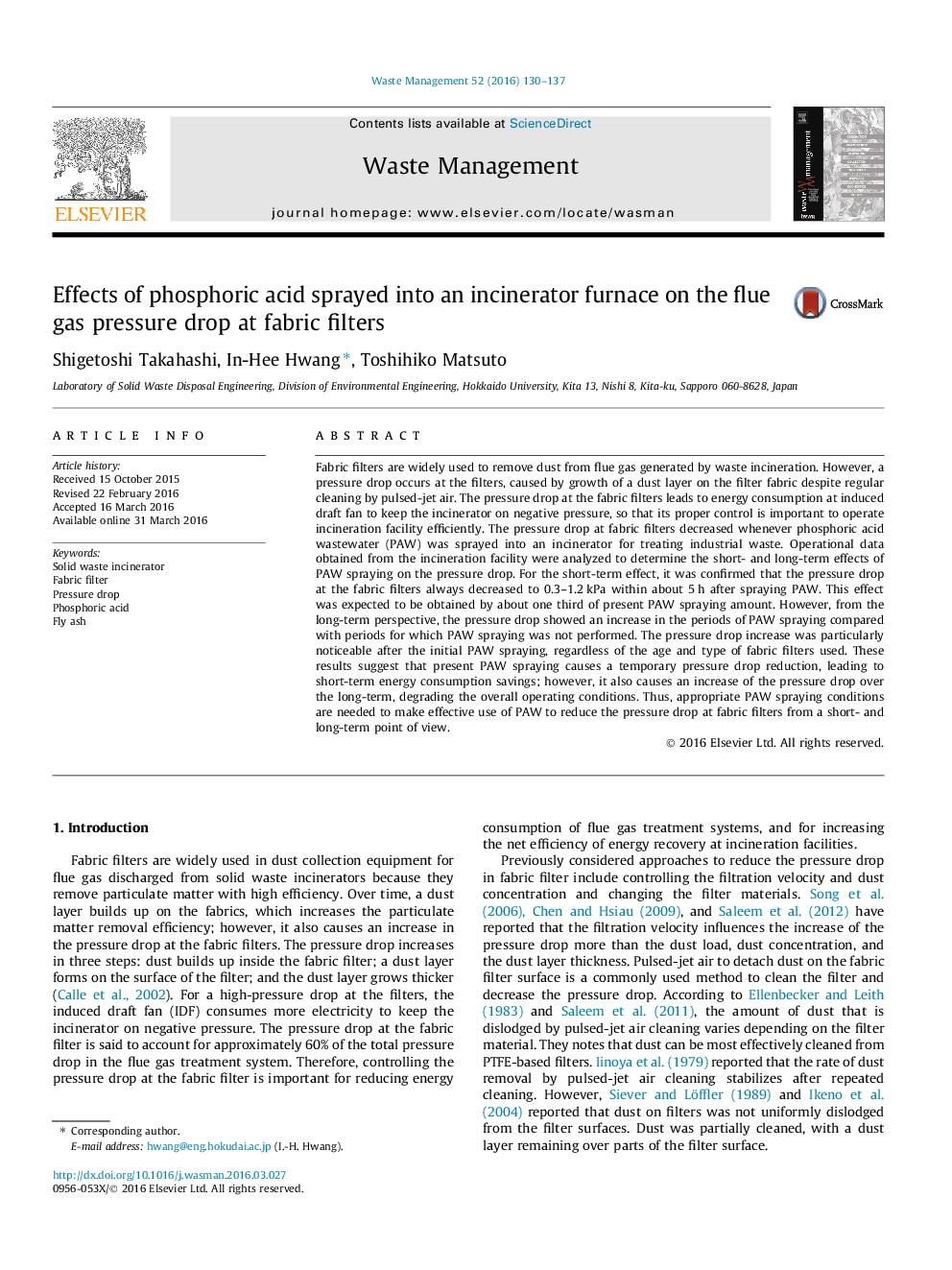| کد مقاله | کد نشریه | سال انتشار | مقاله انگلیسی | نسخه تمام متن |
|---|---|---|---|---|
| 4471235 | 1622634 | 2016 | 8 صفحه PDF | دانلود رایگان |
• Effect of spraying phosphoric acid wastewater (PAW) to an incinerator was surveyed.
• Operating and monitoring data of an industrial waste incinerator was analyzed.
• Investigation was focused on the variation of pressure drop at a fabric filter.
• Decrease of pressure drop at the fabric filter was observed during PAW spraying.
• But it might lead to increase of pressure drop from a long-term perspective.
Fabric filters are widely used to remove dust from flue gas generated by waste incineration. However, a pressure drop occurs at the filters, caused by growth of a dust layer on the filter fabric despite regular cleaning by pulsed-jet air. The pressure drop at the fabric filters leads to energy consumption at induced draft fan to keep the incinerator on negative pressure, so that its proper control is important to operate incineration facility efficiently. The pressure drop at fabric filters decreased whenever phosphoric acid wastewater (PAW) was sprayed into an incinerator for treating industrial waste. Operational data obtained from the incineration facility were analyzed to determine the short- and long-term effects of PAW spraying on the pressure drop. For the short-term effect, it was confirmed that the pressure drop at the fabric filters always decreased to 0.3–1.2 kPa within about 5 h after spraying PAW. This effect was expected to be obtained by about one third of present PAW spraying amount. However, from the long-term perspective, the pressure drop showed an increase in the periods of PAW spraying compared with periods for which PAW spraying was not performed. The pressure drop increase was particularly noticeable after the initial PAW spraying, regardless of the age and type of fabric filters used. These results suggest that present PAW spraying causes a temporary pressure drop reduction, leading to short-term energy consumption savings; however, it also causes an increase of the pressure drop over the long-term, degrading the overall operating conditions. Thus, appropriate PAW spraying conditions are needed to make effective use of PAW to reduce the pressure drop at fabric filters from a short- and long-term point of view.
Journal: Waste Management - Volume 52, June 2016, Pages 130–137
